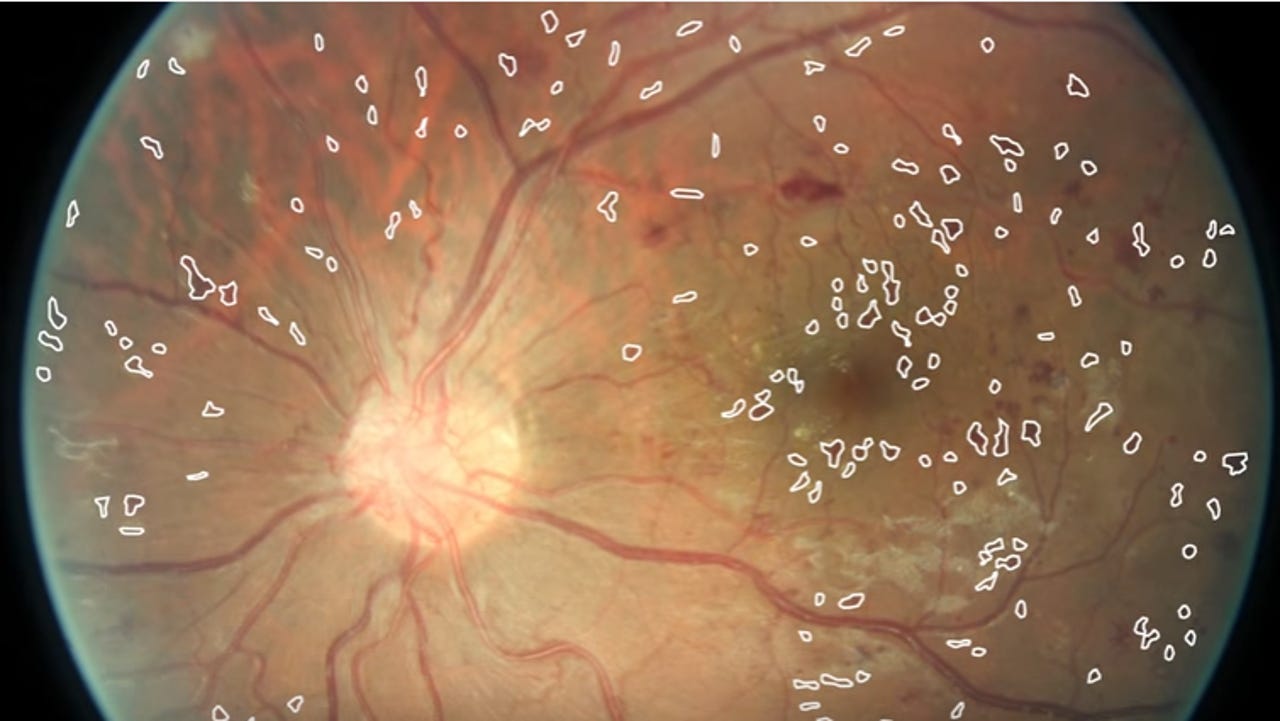IBM uses deep learning to better detect a leading cause of blindness


An eye scan with Diabetic Retinopathy hemorrhages highlighted.
IBM on Thursday announced its latest breakthrough in combating eye disease, with new research methods that could help doctors diagnose and classify diabetic retinopathy (DR).
DR is a complication of diabetes and one of the leading causes of blindness in the US. Using deep learning and visual analytics technology, IBM researchers were able to classify the severity of patients' DR with 86-percent accuracy.
The method takes just 20 seconds to identify and classify legions, which could help more doctors screen more patients. Currently, diabetes patients are screened for DR by an expert clinician, in an often manual and time-intensive process.
DR is classified into five severity levels (no DR; mild; moderate; severe; proliferative DR) based on the presence of lesions on the retina and damage to the retina's blood vessels.
IBM's new method for classifying the disease combines two analytics approaches -- convolutional neural networks (CNN) with a dictionary-based learning to incorporate DR specific pathologies.
The research results were presented at the IEEE's International Symposium on Biomedical Imaging this week in Melbourne.
The work builds on IBM Research's use deep learning techniques and image analytics technology to help diagnose a range eye diseases. IBM has invested heavily in using cognitive technology in the health care sector, with 12 research labs around the world focused on using medical imaging analysis for a range of diseases from eye disease to lung cancer and melanoma.
IBM Watson can now do your taxes for you